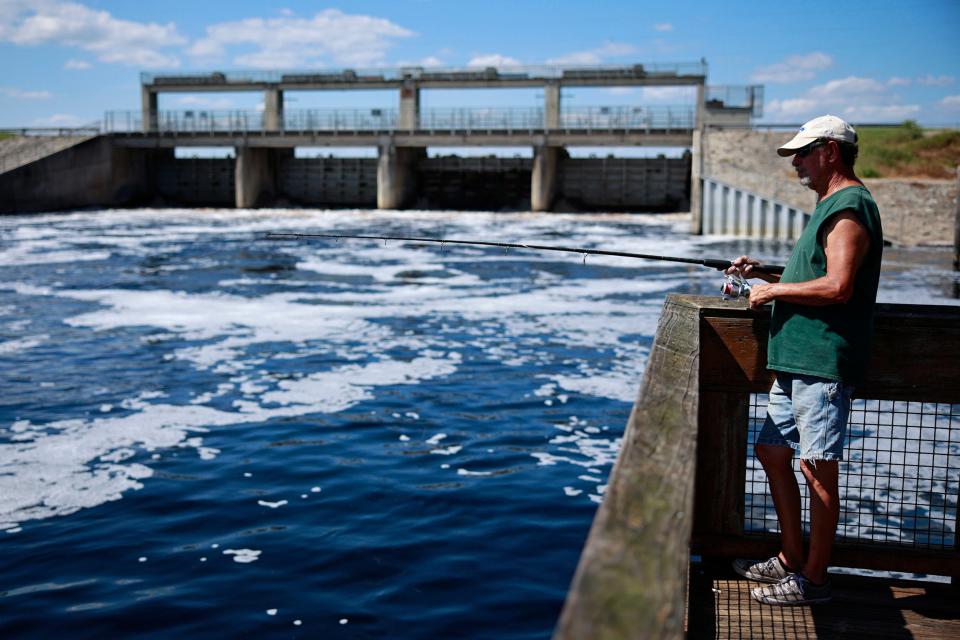Dana Brown: City's 'unsung heroes' protect water quality in Jax, more work to be done

I read with great interest Mark Woods’ Oct. 16 column, celebrating the 50th anniversary of the Clean Water Act. Like so many pieces I have read, the city’s water quality history begins and ends with Mayor Hans Tanzler. But there is so much more to Jacksonville’s efforts to clean up and protect the St. Johns River and its tributaries through the Jacksonville Environmental Protection Board (JEPB) and the city’s Environmental Quality Division (EQD).
Through JEPB rule adoption and efforts by EQD’s Water Quality Branch under JEPB Rule 3, the local environmental program phased out nearly four hundred less-reliable package wastewater treatment plants by requiring them to connect to larger regional treatment facilities. The required connection of these plants removed many unpermitted sewage discharges that were occurring in the St. Johns River and its tributaries.
Wetlands report: Jacksonville has 'need for concern' for health of St. Johns River
Hanging in the balance: Florida governor's election could determine fate of highly debated Rodman dam
In addition to rules governing package wastewater treatment plants, Jacksonville was the first and only local environmental program to adopt through JEPB rules, comprehensive operation and maintenance requirements for lift stations further reducing unpermitted sewage discharges occurring in the St. Johns River and its tributaries.
Through ordinance code adoption and in partnership with JEA, the city’s Planning and Development Department and the Florida Department of Health, EQD implemented the septic tank connection compliance program to address failing septic tanks affecting nutrient levels in the St. Johns River and its tributaries. With the 2016 adoption of a new voluntary program by City Council, which now requires 70% approval by the identified failure area residents to be connected to city sewer for free, the local environmental program’s oversight of the program was transferred from EQD to the Public Works Department.
However, prior to moving to a voluntary program, EQD, in conjunction with its partners, was successful in connecting thousands of septic tanks in designated septic tank failure areas through its compliance efforts.
The St. Johns River and its tributaries also suffer from turbidity issues that can occur from erosion and sediment runoff from construction projects. Turbidity damages aquatic life by blocking out sunlight. These discharges can also kill grass beds in surface waters. Under JEPB Rule 3, EQD has the responsibility to inspect these sites to ensure that proper erosion and sediment control measures are maintained to prevent turbid discharges.
At a recent point in time, EQD staff had more than 300 construction sites on file and the number of sites grew by four per week. The use of best management practices for erosion control is now incorporated and are included as line items in contracts. The local environmental program also offers free pre-violation consultations to industry. As a result, enforcement of water quality violations due to erosion-related problems has been dramatically reduced.

In addition, the Florida Department of Environmental Protection has recognized EQD’s inspection and compliance program as a model for the state and portions of the program’s Erosion and Sediment Control Inspector’s Guide have been adopted by FDEP for inclusion in their inspector’s certification program.
The runoff from our yards also affects the St. Johns River and its tributaries. Through efforts by EQD and working in partnership with green industry at the state and local levels, the city adopted a fertilizer ordinance which governs its application to our lawns. The ordinance also governs the disposal of leaf and yard clippings, prohibiting them from being blown into the street and into city storm drains.
These measures help prevent excess nutrients that can cause algae blooms in the St. Johns River and its tributaries.
If you want to know about the health of the St. Johns River and its tributaries, then you need look no further than the annual State of the River Report funded by the JEPB since its inception 15 years ago. The report provides a comprehensive scientific analysis of the health and condition of the St. Johns River and its tributaries.
While these are generally local efforts, the City of Jacksonville’s mayors, the JEPB and EQD have also worked with the governor’s office and the Florida Legislature on numerous substantive water quality issues. Among them are wetlands protection and state permitted discharges that the local environmental program is preempted from regulating, as well as seeking the funding necessary to improve the health of the St. Johns River and its tributaries.
Targeting algae: Jacksonville weighs pilot project to filter city's drainage and help St. Johns River
William McQuilkin: Restoring the Ocklawaha River makes good business sense, too
Letters: College students should know their obligations and plan accordingly on loans
One of the most notable efforts for me, though, dates to 1998. Through the work of EQD, with the support of the JEPB, the City of Jacksonville’s mayor formally called for the governor and the Florida Legislature to approve and fund the removal of Rodman (Kirkpatrick) Dam and restore the Ocklawaha River.
So, now you know the rest of the story. Yes, let’s celebrate the 50th anniversary of the Clean Water Act. Federal, state and local governments, as well as numerous environmental organizations, have done much to improve our waterways. But let us also be sure to celebrate the unsung City of Jacksonville heroes — our local environmental program and its staff — who work day in and day out conducting their mission to protect and improve the water quality of the St. Johns River and its tributaries.
Much work remains to be done and public support is critical as the local environmental program moves forward.

Dana B. Brown, former manager and legislative liaison, City of Jacksonville Environmental Quality Division
This guest column is the opinion of the author and does not necessarily represent the views of the Times-Union. We welcome a diversity of opinions.
This article originally appeared on Florida Times-Union: Dana Brown: City's 'unsung heroes' protect water quality in Jax

